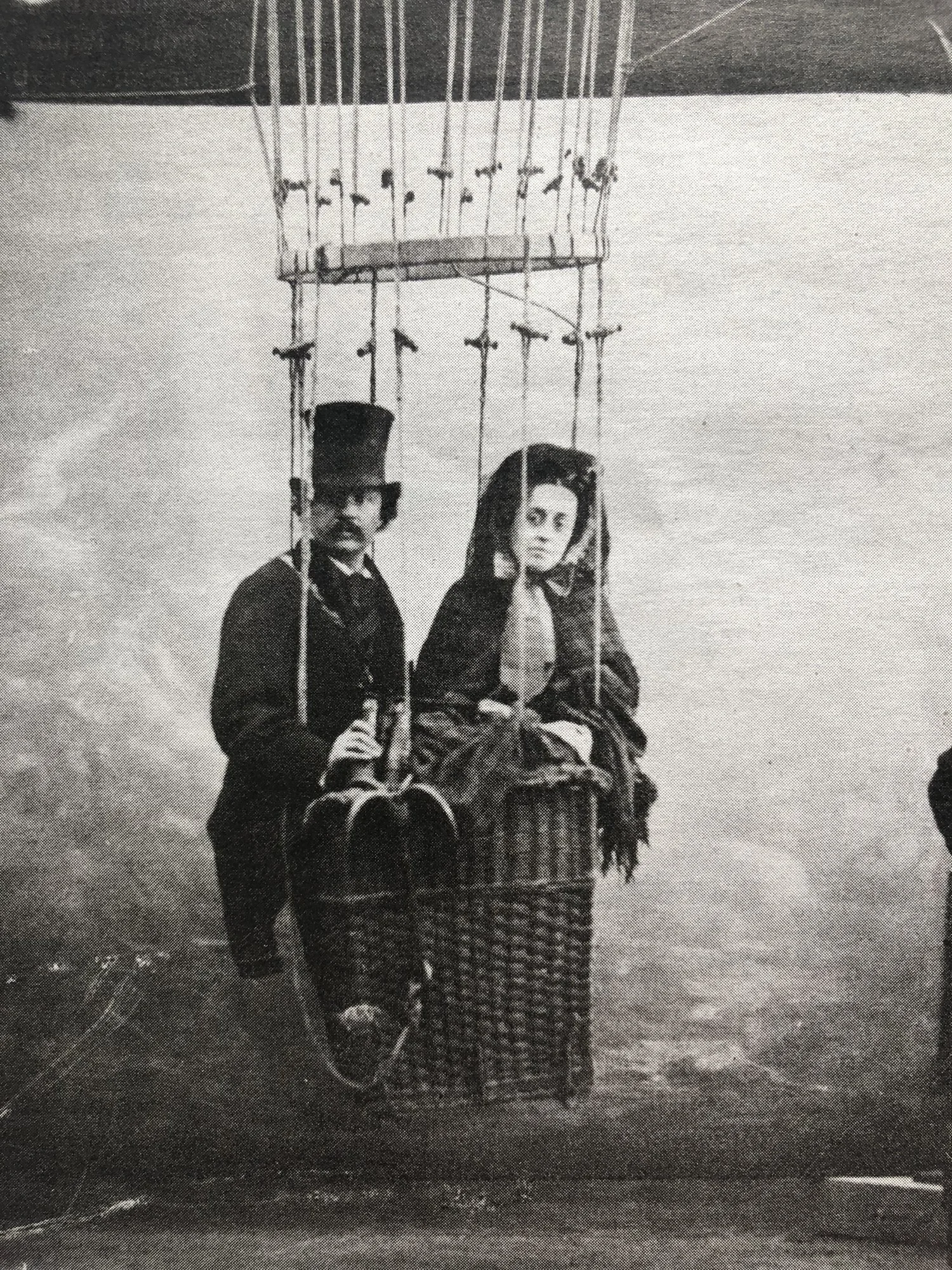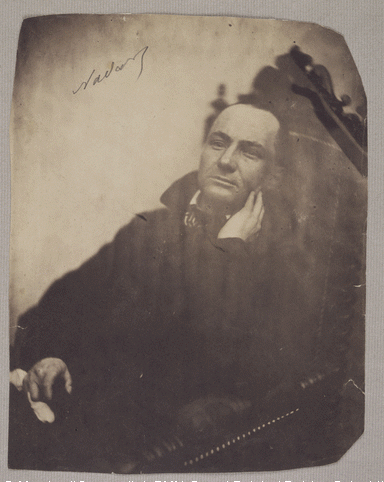THE GREAT NADAR
Felix Nadar and his wife, Ernestine, in a baloon, circa 1865
Felix Nadar, born in Paris in 1820
Expelled from college, abandoned medical school, moved to the Left Bank:
Felix hadn't stirred form his bed for two months, having no clothes to go out in. His mistress had pantaloons and yellow boots she wore to the Opera Ball. The two of them had a passion for oysters, and the discarded shells carpeted the floor of the room.
Lived hand-to-mouth for twenty years as a small-time journalist, political radical, cartoonist, and would-be novelist.
In 1851 he produced over five-hundred individual caricatures. In 1854 he produced the Pantheon Nadar a literary lithograph featuring 250 jostling writers led by Victor Hugo. Only 136 copies were sold.
Then, celebrity photography.
Félix Nadar (1820-1910)Charles Baudelaire in an armchair1855Unique salted paper print from a destroyed negativeH. 28; W. 16.5 cmParis, Musée d'Orsay© Musée d'Orsay, dist. RMN-Grand Palais / Patrice Schmidt
Nadar produced plain, large-format portraits with no props, for which he charged a princely 100 francs. He concentrated all his skills on posing his subject and carefully lighting the face, to achieve what he called "la resemblance intime."
In 1860, as the photography boom continued, Nadar moved to a new, large studio at 35 boulevard des Capucines, with luxurious ground-floor reception rooms, a two-story iron and glass rooftop extension (costing "a staggering 230,000 francs"), and a uniformed staff of fifty. Here the name "Nadar" became a true advertising logo, written in huge scarlet letters across the second-floor frontage of an early form of neon advertising designed by Antoine Lumiere, father of the famous Lumiere brothers.
Nadar now boasted various technical innovations. He took studio photographs by electric arc light and transported his equipment underground with a set of massive storage batteries, in order to photograph the Paris catacombs and the monumental sewers beneath Haussmann's new boulevards.
He also took his camera up in a ballon and claimed the first successful aerial photograph taken about Paris, in 1858. He patented all of his techniques.
In 1863 he founded a society to further the cause of heavier-than-air machines, that is, true airplanes. Its secretary was the young Jules Verne. Nadar commissioned an enormous, two-hundred-foot hydrogen balloon ("The Giant") precisely to promote the very opposite cause, the superiority of airplanes over aerostats. He flew the ballon with nine passengers, including his wife, from Paris eastward into Germany. The appalling crash-landing that followed was reported in Scientific American. The flight proved his point about airplanes, but badly injured everyone and for a moment looked as if it had actually killed Ernestine with a blow to the throat.
Ernestine, 1890
The above photo: It presents her with monumental simplicity, propped against a pillow, silver-haired and huge-eyed, smelling a sprig and violets. Roland Barthes wrote an entire book, Camera Lucida (1980), that was inspired by this picture, a masterpiece of tenderness that for him demonstrated Nadar was "the greatest photographer in the world."
Much I have excerpted from various sources.
Please note that I do not own the copyright to most of the texts, images, or videos.








